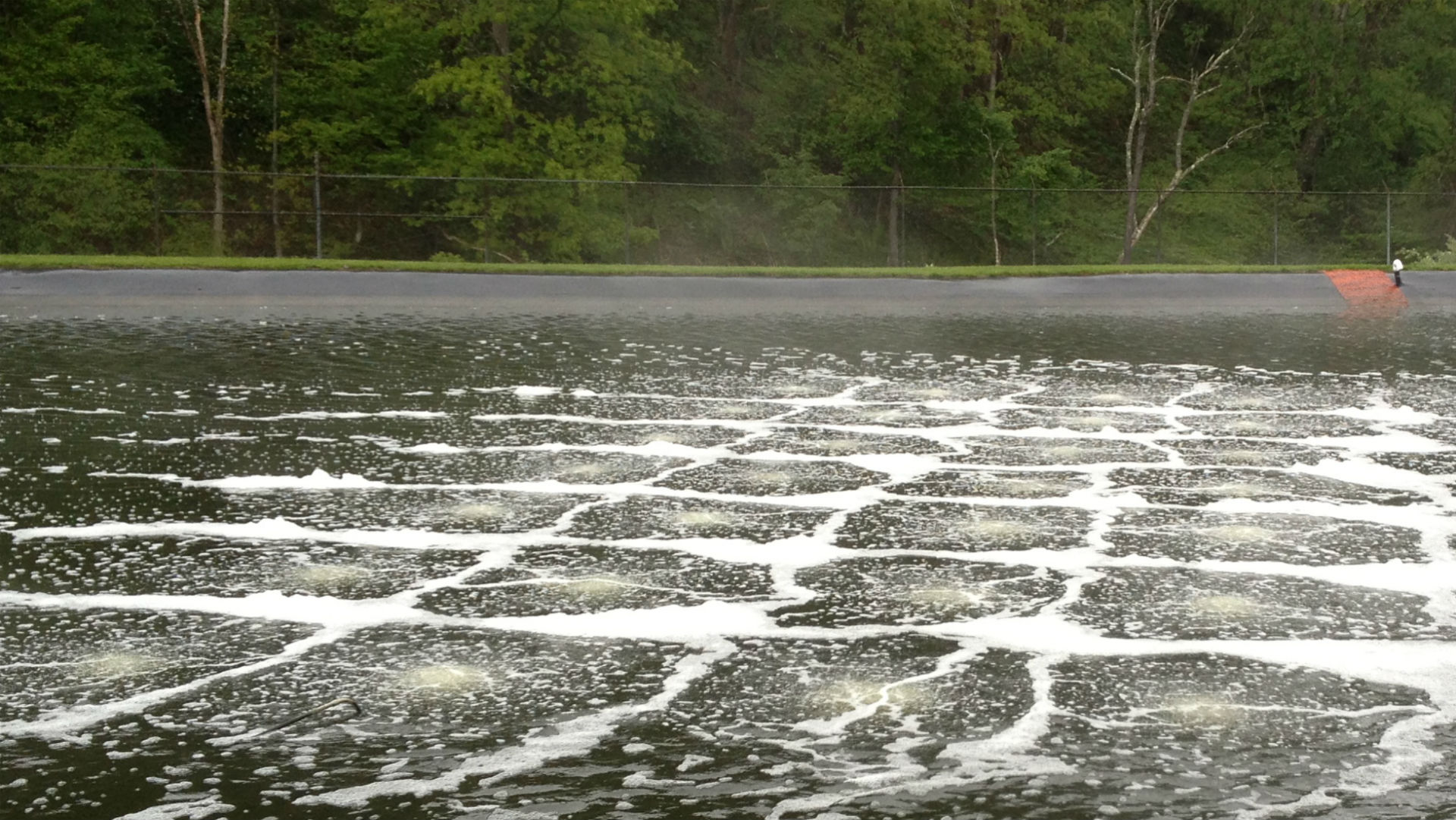
Lagoon aeration is a topic we cover regularly, evaluating technologies, comparing partial mix vs. complete mix systems, troubleshooting low dissolved oxygen (DO) levels and the problems too little aeration can cause, like odors and sludge accumulation. But is it possible to overaerate? Can you have too much lagoon aeration?
In this article, we’ll describe the factors that determine lagoon DO levels and whether or not it’s possible to overaerate a lagoon.
Note: Lagoon ammonia treatment has different DO requirements, with an optimal dissolved oxygen concentration of 5.0–8.0 mg/L for nitrification. For the sake of simplicity, this article is focused on BOD treatment alone. For more information on lagoon ammonia treatment, read our blog, Sources & Treatment of Lagoon Ammonia.
What is lagoon aeration?
Aeration provides the dissolved oxygen (DO) that fuels digestion of biological oxygen demand (BOD), and sufficient aeration is critical to effective wastewater treatment. Algae and the surface interface with the atmosphere provide DO to a facultative lagoon. In an aerated lagoon system, surface or submerged aeration equipment transfers oxygen and often provides turbulent mixing to keep solids in suspension so they don’t settle as sludge.
The BOD-consuming bacteria in a wastewater lagoon require 1.5–2 lbs of oxygen per pound of applied BOD. Spring turnover can boost that requirement to 4 lbs of DO per pound of BOD, as warmer temperatures cause the BOD that’s been stored over the winter and the accumulated sludge to become resuspended in the water column.
Factors that affect dissolved oxygen levels
In theory, the optimal level of lagoon DO would be zero, representing equilibrium: exactly the amount of DO necessary to process the BOD, and no more. Of course, in the real world, it’s a little more complicated than that. Following are some of the factors that contribute to variation in lagoon DO levels and prevent equilibrium:
- Loading: Changes in flows and BOD loadings affect the demand for DO.
- Temperature: Cold water holds more DO than warm water.
- Depth: A lagoon without robust mixing will have more DO at the surface than at the bottom. In deeper lagoons, circulation of water is important to ensure the entire water column is as homogeneous as possible in terms of DO concentration.
- Time of Day/Night: In a facultative lagoon, DO levels will be highest in the afternoon and evening when algae has spent the day photosynthesizing and lowest in the morning, as decaying algae have spent the overnight using up all the oxygen they created the previous day. Under sunny conditions, algae can produce about 1.5 lbs of oxygen per pound of algae, although their die off depletes DO and adds solids to the lagoon. It is unlikely that algae can provide a reliable DO level high enough to ensure proper treatment.
- Sludge: Accumulated sludge has an oxygen demand of its own as a certain percentage of it is simply undigested BOD. When retrofitting a lagoon aeration system it is important to keep this in mind: Basing aeration requirements solely on influent BOD without accounting for benthal demand from sludge will likely mean the lagoon is underaerated.
- Location: Oxygen demand will be greatest at the influent side, where BOD is highest, and decrease down the length of the lagoon.
It’s important that DO levels are tested in the morning and in the afternoon at multiple locations and depths. This gives the operator a true picture of DO conditions and helps to diagnose short-circuiting before it causes poor effluent quality.
Because of all the variables, lagoon aeration is often designed with 1–4 mg/L excess dissolved oxygen to provide a buffer zone to ensure sufficient DO for BOD treatment. But aeration much over what’s necessary to treat BOD wastes energy and adds stress to equipment.
Yes, you can have too much lagoon aeration
The baseline, back-of-an-envelope calculation for lagoon aeration is 1.5 lbs of oxygen applied for every pound of influent BOD, which is a conservative oxygen loading requirement given that some industrial systems are designed for 1.1 lbs O2 per lb of BOD. As Steve Harris states in his manual, Wastewater Lagoon Troubleshooting: An Operators Guide, most lagoon problems can be avoided if DO levels are kept above 2.0 mg/L.
However, consistent DO levels far above 2.0 mg/L in a treatment cell can indicate overaeration and wasteful power consumption. Because aeration accounts for up to 60 percent of a lagoon’s operating budget, these costs can be significant. In addition, overuse puts unnecessary stress on equipment, increasing maintenance expense and reducing its useful life.
Just right lagoon aeration
A dissolved oxygen level of 2.0 mg/L is the generally accepted sweet spot to ensure efficient lagoon BOD treatment and prevent odors without wasting energy. Finding the most cost-effective way to ensure this consistent DO level, however, depends on lagoon conditions and requires a lot more calculation than we can get into in an article.
For guidance on how your lagoon can be optimally aerated, talk to the lagoon experts! At Triplepoint, we’re committed to helping lagoon operators maximize treatment while minimizing capital and operations costs. We can provide you with design calculations, preliminary layouts, and a lifecycle cost analysis to demonstrate how Ares Aeration can cost-effectively upgrade your lagoon system to meet even the most stringent limits.


